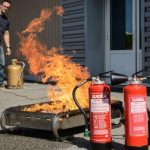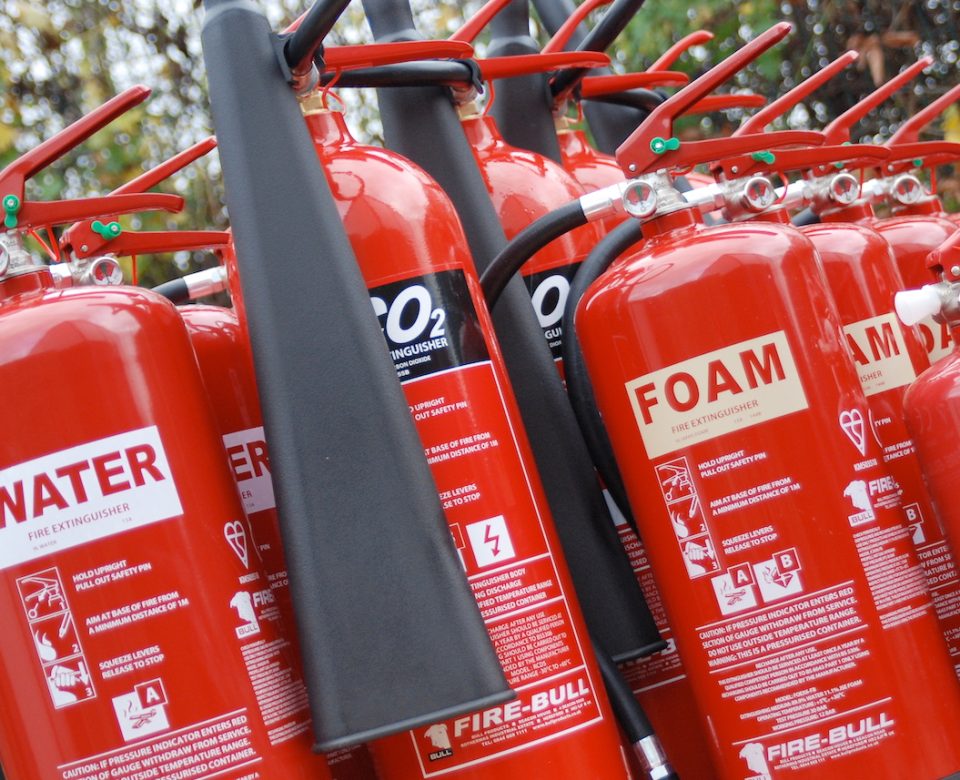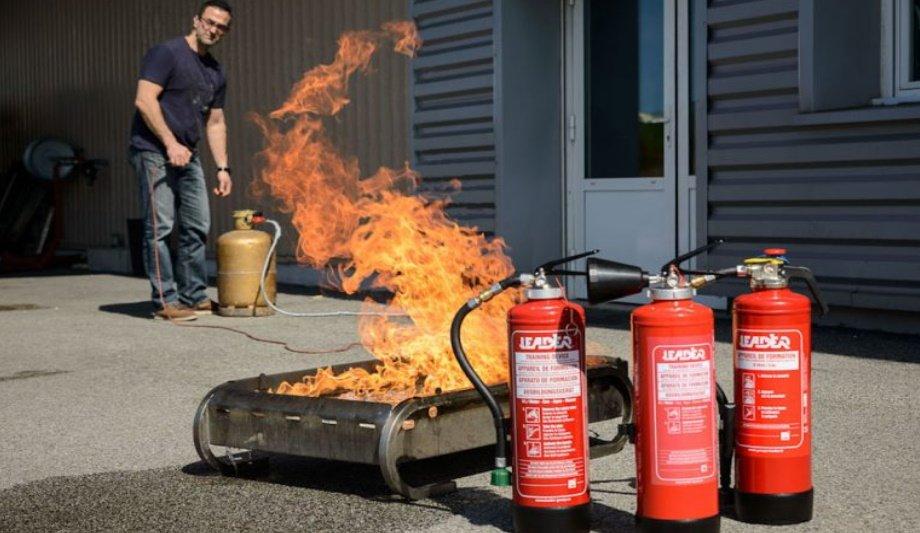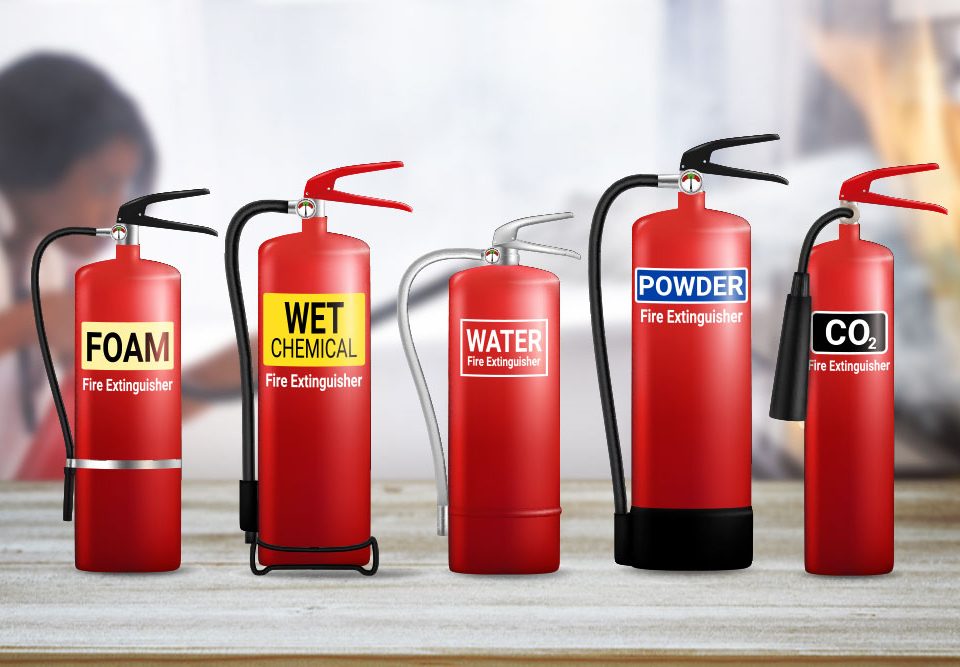
Fire Extinguisher Recharging Techniques and Best Practices
September 30, 2025
Can a Class K Fire Extinguisher Put Out a Grease Fire?
October 13, 2025Kitchen fires are one of the most common types of home fires, often caused by cooking oils, grease, or faulty electrical appliances. Since kitchen fires can spread rapidly, having the right fire extinguisher on hand is crucial for safety. This blog aims to guide you through the types of fire extinguisher suitable for a home kitchen, so you can make an informed choice.
Understanding Kitchen Fire Hazards
Fires in kitchens usually start because of grease or oil catching fire, electrical malfunctions, or gas leaks. For example, hot oil can flare up suddenly if overheated or spilled. Electrical appliances like microwaves, stoves, or toasters can also cause fires if they short circuit. Because kitchen fires commonly involve flammable liquids and electrical sources, standard fire extinguishers may not always work effectively.
Fire Extinguisher Classes Explained
Fire extinguishers are divided into classes based on the type of fire they are designed to extinguish:
- Class A fires involve everyday materials like wood, cloth, and paper.
- Class B fires involve flammable liquids such as oil, grease, and gasoline.
- Class C fires are caused by electrical equipment.
- Class K (also known as Class F in some regions) fires occur in kitchens and involve cooking oils and fats.
Home kitchens mostly face fires from Classes B, C, and K, so fire extinguishers designed for these classes are the safest choice.
The Best Types of Fire Extinguishers for Kitchens
- Class K Fire Extinguishers (Wet Chemical Extinguishers)
These extinguishers are specially designed for kitchen fires involving cooking oils and fats. They work by spraying a fine mist that cools the flames and creates a soapy layer on top, which helps prevent the fire from reigniting. This makes Class K extinguishers the safest and most effective choice for grease fires commonly seen in home kitchens. - Class ABC Multi-Purpose Fire Extinguishers
These are versatile extinguishers that can handle fires involving ordinary combustibles, flammable liquids, and electrical equipment. They are a good general option for homes, especially if you want one extinguisher for multiple fire types. However, they are less effective against grease fires and should not replace a Class K extinguisher in a kitchen. - CO₂ Fire Extinguishers
Carbon dioxide (CO₂) extinguishers are very effective on electrical fires, such as those involving microwaves and toasters, because they leave no residue and do not damage electronics. However, they are not designed to handle grease or oil fires and should be used alongside a Class K extinguisher rather than alone in a kitchen.
What NOT to Use in Kitchen Fires
A common dangerous mistake is using water to extinguish a grease or oil fire. Adding water causes the oil to splatter and spread the fire rapidly. Other improper methods to avoid include throwing flour or other powders on a grease fire, which can cause explosions or worsen the fire.
How to Use a Fire Extinguisher Properly (PASS Method)
To use any fire extinguisher safely and effectively, follow the PASS steps:
- Pull the pin to unlock the extinguisher.
- Aim the nozzle at the base of the fire.
- Squeeze the handle to release the extinguishing agent.
- Sweep the nozzle from side to side until the fire is out.
Always remember, if the fire becomes uncontrollable or too large, evacuate and call emergency services immediately.
Fire Safety Tips for Home Kitchens
- Place a small, easy-to-access fire extinguisher near your kitchen exit for quick use.
- Check the fire extinguisher price and invest in a certified and durable model.
- Inspect your fire extinguisher regularly for expiration dates and damages.
- Keep the stovetop clean and never leave cooking unattended.
- Consider purchasing a fire blanket or keeping a fire bucket nearby as additional safety tools.
- Fire extinguisher balls or fire balls are also available; these can be a convenient option as they automatically release fire-suppressing agents when exposed to flames. You can check the fire extinguisher ball price in Pakistan if interested in these modern devices.
Conclusion
For home kitchens, the best type of fire extinguisher is a Class K wet chemical fire extinguisher, designed to put out grease and cooking oil fires safely and efficiently. To cover other types of fires that might occur, such as electrical fires or general combustibles, pairing a Class K extinguisher with an ABC multi-purpose extinguisher is ideal. Proper usage, regular maintenance, and having additional tools like fire blankets ensure you stay safe.
Being prepared and having the correct fire extinguisher at hand can save your life and property from a devastating kitchen fire.




